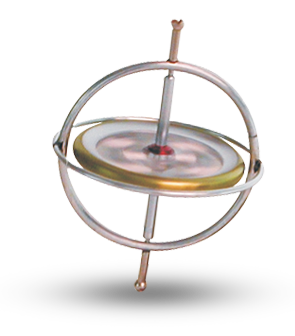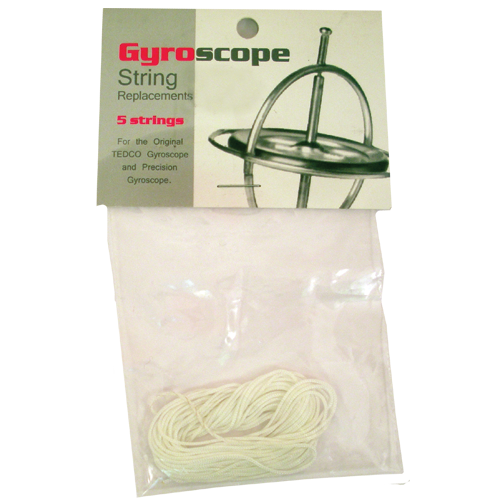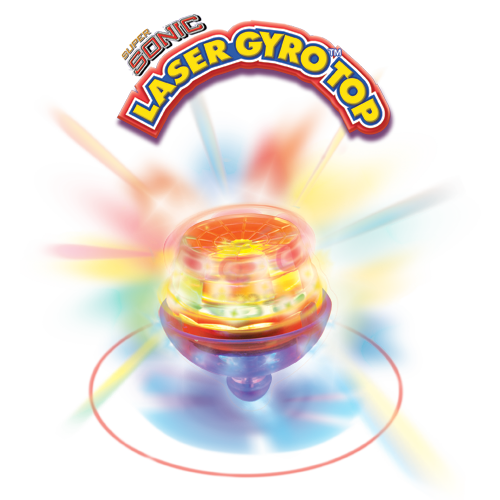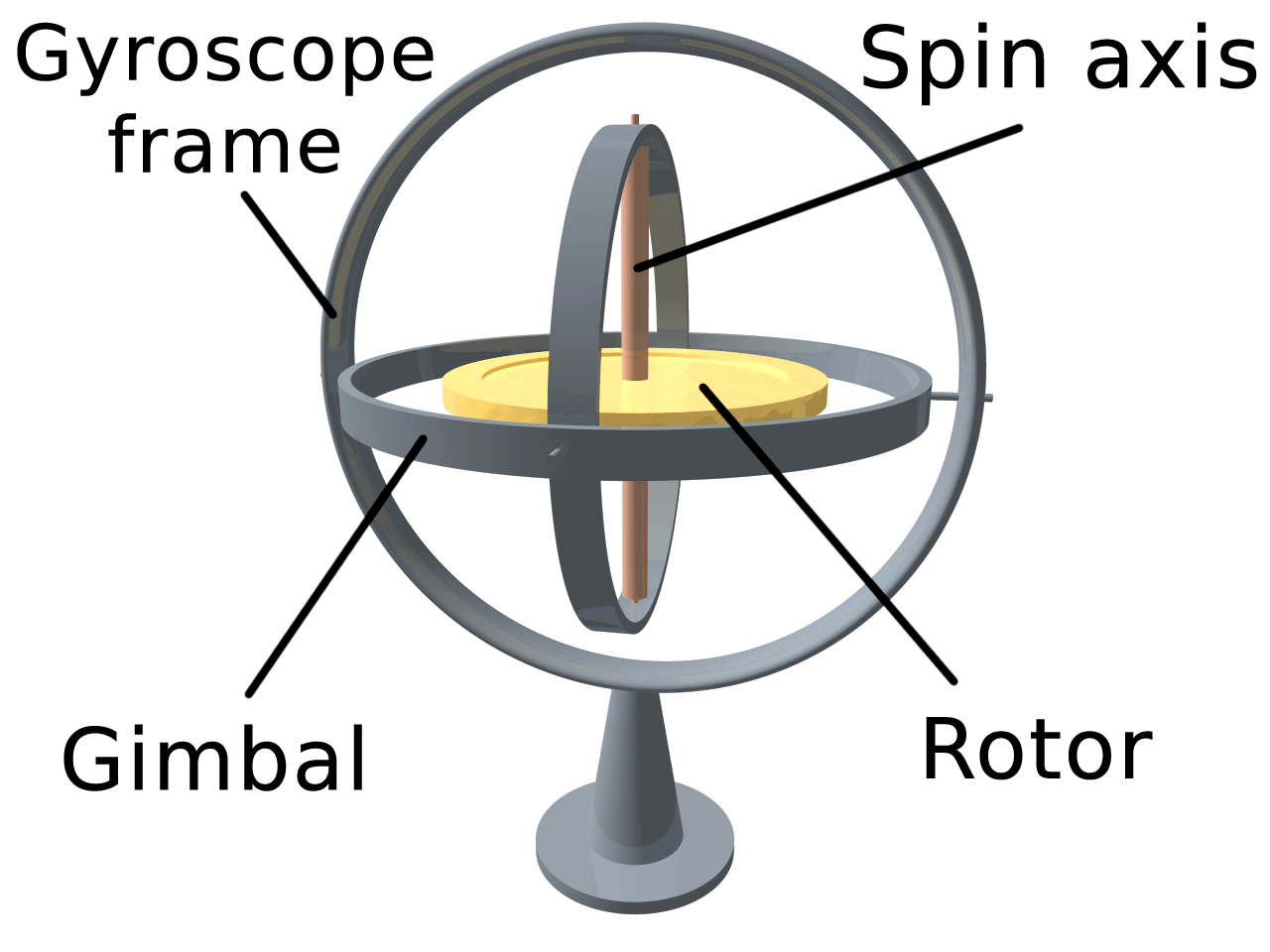It looks like you're using an Ad Blocker.
Please white-list or disable AboveTopSecret.com in your ad-blocking tool.
Thank you.
Some features of ATS will be disabled while you continue to use an ad-blocker.
share:
There are relatively few “UFO” vids that I find particularly compelling but the Nellis UFO footage happens to be one of my very favorites.
The footage is generally accepted as “real” by researchers—-that is to say real footage from Nellis of an actual airborne object that seems to have caused some actual confusion among the operators in the camera/control center.
All in all a remarkable piece of footage I think.
However, being that the footage is apparently from Nellis, Occam’s Razor would seem to suggest, maybe, something more down to earth. But what? What can move like that?
The flight maneuvers of this object are pretty extreme and the chatter between the camera-system operators is interesting and adds another layer of interest and "onsite" commentary to this UFO “vid.”
The speeds seem impressive, enough, but maybe not so “otherworldly”---the main characteristic that lends it its “anomalous” feel seems to be the stunning bee-like maneuvers.
It’s those bee-like maneuvers that I believe might possibly provide us a clue.
That along with what the infamous Lt. Col. Michael Aquino inferred (elsewhere in a ATS thread) was a hint about drone technology in general.
Part of his hint as regards drones consisted of the following fascinating vintage video. It immediately made me think of the Nellis film.
“Give the devil his due” might truly apply on this one as regards Aquino heh.
Dr. Laithwaite was a pretty hip cat! Would've loved to have him as a Prof.
Imagine a drone with a gyro inside. Not one for navigation but, rather, for extreme maneuverability and spatial attitude. As far as I can figure—I’ve played with a gyroscope or two but I ain’t no expert—a drone such-fitted could achieve g-forces unsustainable by a human pilot.
Then there’s this to consider:
"WHERE'S IT COME FROM?"
A STUDY OF THE 1994 NELLIS UFO VIDEO FOOTAGE by Martin J. Powell
Drop it on the unsuspecting crew and see if they can A.) Follow it with the cam system and, B.) Monitor the crew's reactions and guesses as to what it is.

The main—and most baffling—gyroscopic effect is precession.
My greatest understanding of precession--probably my only understanding of it--comes not from trying to read and comprehend the concept, ahem, but from hands on experience!
 My First Experience
My First Experience
 Followed By The Classic Gyro Top
Followed By The Classic Gyro Top

Not Just Any String Would Do
 Then Came The Power Assist Gyro-Tops
Then Came The Power Assist Gyro-Tops
Gyroscopic effects are also integral to the physical mechanics of other toys like yo-yos, Frisbees, and…Fidget Spinners!

The concept is also especially useful in space.
Gyrostat
Link
Skylab is officially the first spacecraft fitted with CMGs for attitude control followed by the Salyut and Mir space stations.
Don’t get me wrong: I’m still open to the Nellis UFO being something anomalous and while it can most likely be explained by limitations of the optical system being used to film, the object does give the distinct appearance at times of shapeshifting—-so, ultimately, who knows. And if we are using gyroscopic systems in space who's to say extraterrestrials aren't using it is also a fair question.
So what do you think? Do gyroscopic systems make sense in drones? Could all of the above be the explanation for the puzzling and amazing Nellis Range UFO?
The footage is generally accepted as “real” by researchers—-that is to say real footage from Nellis of an actual airborne object that seems to have caused some actual confusion among the operators in the camera/control center.
All in all a remarkable piece of footage I think.
However, being that the footage is apparently from Nellis, Occam’s Razor would seem to suggest, maybe, something more down to earth. But what? What can move like that?
The flight maneuvers of this object are pretty extreme and the chatter between the camera-system operators is interesting and adds another layer of interest and "onsite" commentary to this UFO “vid.”
The speeds seem impressive, enough, but maybe not so “otherworldly”---the main characteristic that lends it its “anomalous” feel seems to be the stunning bee-like maneuvers.
It’s those bee-like maneuvers that I believe might possibly provide us a clue.
That along with what the infamous Lt. Col. Michael Aquino inferred (elsewhere in a ATS thread) was a hint about drone technology in general.
Part of his hint as regards drones consisted of the following fascinating vintage video. It immediately made me think of the Nellis film.
“Give the devil his due” might truly apply on this one as regards Aquino heh.
Dr. Laithwaite was a pretty hip cat! Would've loved to have him as a Prof.
Imagine a drone with a gyro inside. Not one for navigation but, rather, for extreme maneuverability and spatial attitude. As far as I can figure—I’ve played with a gyroscope or two but I ain’t no expert—a drone such-fitted could achieve g-forces unsustainable by a human pilot.
Then there’s this to consider:
"WHERE'S IT COME FROM?"
A STUDY OF THE 1994 NELLIS UFO VIDEO FOOTAGE by Martin J. Powell
Area 51 publicist Glenn Campbell cites the case of a former female radar operator at the Nellis range who operated from a closed threat-radar trailer, which is evidently able to maneuver around the range and present threats to aircraft from unpredictable locations.18 Her description of the equipment and operations at the range seem appropriate to those that we see in the Nellis footage.
Drop it on the unsuspecting crew and see if they can A.) Follow it with the cam system and, B.) Monitor the crew's reactions and guesses as to what it is.
A gyroscope is a spinning wheel or disc in which the axis of rotation is free to assume any orientation by itself. When rotating, the orientation of this axis is unaffected by tilting or rotation of the mounting, according to the conservation of angular momentum.
Because of this, gyroscopes are useful for measuring or maintaining orientation.
Gyroscopes based on other operating principles also exist, such as the electronic, microchip-packaged MEMS gyroscopes found in consumer electronics devices, solid-state ring lasers, fibre optic gyroscopes, and the extremely sensitive quantum gyroscope.

The main—and most baffling—gyroscopic effect is precession.
My greatest understanding of precession--probably my only understanding of it--comes not from trying to read and comprehend the concept, ahem, but from hands on experience!



Not Just Any String Would Do

Gyroscopic effects are also integral to the physical mechanics of other toys like yo-yos, Frisbees, and…Fidget Spinners!

The concept is also especially useful in space.
Gyrostat
A gyrostat consists of a massive flywheel concealed in a solid casing.Its behaviour on a table, or with various modes of suspension or support, serves to illustrate the curious reversal of the ordinary laws of static equilibrium due to the gyrostatic behaviour of the interior invisible flywheel when rotated rapidly. The first gyrostat was designed by Lord Kelvin to illustrate the more complicated state of motion of a spinning body when free to wander about on a horizontal plane, like a top spun on the pavement, or a bicycle on the road.
Kelvin also made use of gyrostats to develop mechanical theories of the elasticity of matter and of the ether. In modern continuum mechanics there is a variety of these models, based on ideas of Lord Kelvin…
…In modern times, the gyrostat concept is used in the design of attitude control systems for orbiting spacecraft and satellites.[35] For instance, the Mir space station had three pairs of internally mounted flywheels known as gyrodynes or control moment gyros.
A control moment gyroscope (CMG) is an attitude control device generally used in spacecraft attitude control systems. A CMG consists of a spinning rotor and one or more motorized gimbals that tilt the rotor’s angular momentum. As the rotor tilts, the changing angular momentum causes a gyroscopic torque that rotates the spacecraft.
Link
Skylab is officially the first spacecraft fitted with CMGs for attitude control followed by the Salyut and Mir space stations.
Don’t get me wrong: I’m still open to the Nellis UFO being something anomalous and while it can most likely be explained by limitations of the optical system being used to film, the object does give the distinct appearance at times of shapeshifting—-so, ultimately, who knows. And if we are using gyroscopic systems in space who's to say extraterrestrials aren't using it is also a fair question.
So what do you think? Do gyroscopic systems make sense in drones? Could all of the above be the explanation for the puzzling and amazing Nellis Range UFO?
edit on 28-2-2019 by The GUT because: (no reason given)
Gyros are employed in just about all drones. Even consumer grade ones.
Do gyroscopic systems make sense in drones?
www.dronezon.com...
The main function of gyroscope technology is to improve the drones flight capabilities. The drone’s hardware, software and algorithms work together to improve all aspects of the flight including hovering perfectly still or taking steep angled turns. A drone with six axis gimbal feeds information to the IMU and flight controller to vastly improve the flight capabilities.
I was never very impressed with the Nellis video.
a reply to: Phage
I actually figured I'd learn quick just how common it is to drones. It does make perfect sense. I'm guessing that's part of your reason for not being very impressed with the Nellis vid? Pretty old vid, too, so the extreme version of the concept has probably been around for awhile.
And that old Dr. Laithwaite thought no one was paying attention.
I actually figured I'd learn quick just how common it is to drones. It does make perfect sense. I'm guessing that's part of your reason for not being very impressed with the Nellis vid? Pretty old vid, too, so the extreme version of the concept has probably been around for awhile.
And that old Dr. Laithwaite thought no one was paying attention.
edit on 28-2-2019 by The GUT because: (no reason given)
originally posted by: Phage
I was never very impressed with the Nellis video.
Certainly, like most (all) UFO videos, nothing ever became of it. Nobody ever came forward to claim they took it, or anybody else to even say that it was a real thing. I like it because it's not a dumb saucer or triangle. Something different for a change. But admittedly there's ultimately nothing to it.
originally posted by: Box of Rain
a reply to: The GUT
There's no way for me to tell if the object is making those jerky movements or if the camera is moving that way.
The story goes that the apparent jumps are a result of the theodolite filming the thing trying to track it and not keeping up. The slow rotations and shape changes are done by the object, which traveled on a fairly smooth path.
Great thread.
For sure it could have been a drone dropped
in on unsuspecting Nellis ATC. For reactions to Radar.
I’ll take this drone at an upcoming airshow but
I sure hope we get to see a USAF Big Black Triangle
on display someday..
For sure it could have been a drone dropped
in on unsuspecting Nellis ATC. For reactions to Radar.
I’ll take this drone at an upcoming airshow but
I sure hope we get to see a USAF Big Black Triangle
on display someday..
a reply to: Macenroe82
1994 seemingly.
This is the longer vid the above was excerpted from:
1994 seemingly.
This is the longer vid the above was excerpted from:
edit on 28-2-2019 by The GUT because: (no reason given)
An eccentric for sure, here's more Laithwaite for anyone interested:
edit on 28-2-2019 by The GUT because: (no reason given)
a reply to: Macenroe82
I've seen a better youtube copy I do believe but my simple search when writing this didn't turn 'em up.
I've seen a better youtube copy I do believe but my simple search when writing this didn't turn 'em up.
edit on 28-2-2019 by The GUT because: (no reason given)
Can anyone explain what that horizontal trace is at the bottom of the video screen? Is it freq/vs amplitude, or perhaps a linear bearing indicator?
At first, it looked like it followed the audio, but then it does not.
a reply to: charlyv
Try this:
Nellis S-30 UFO discussion: Part 2
Methods, Analysis, Graphs, and Characteristics
Try this:
Nellis S-30 UFO discussion: Part 2
Methods, Analysis, Graphs, and Characteristics
NIce thread, GUT.
I remember getting excited about this case in 1995, and I then completely forgot about it.
It's a radar return signature to help identify the nature of the object. The station is manned rather than remotely controlled, switching between automatic tracking (designated by the letter "A" in the display at 23:21:08) and manual ("M") when the camera fails to lock on. In a second video (from camera "S-13" rather than "S-30", and from a much greater distance) it is all automatic.
I recommend this splendidly clear and concise article.
I remember getting excited about this case in 1995, and I then completely forgot about it.
originally posted by: charlyv
Can anyone explain what that horizontal trace is at the bottom of the video screen? Is it freq/vs amplitude, or perhaps a linear bearing indicator? At first, it looked like it followed the audio, but then it does not.
It's a radar return signature to help identify the nature of the object. The station is manned rather than remotely controlled, switching between automatic tracking (designated by the letter "A" in the display at 23:21:08) and manual ("M") when the camera fails to lock on. In a second video (from camera "S-13" rather than "S-30", and from a much greater distance) it is all automatic.
I recommend this splendidly clear and concise article.
edit on 28-2-2019 by ConfusedBrit because: (no reason given)
And here is the audio transcript [Note: FLIR = Forward-Looking Infrared Radar]. It's lengthy, but arguably just as important and intriguing as the
actual footage (and in places even sounds like they're acting out ATS posters' replies to a thread about it - no swamp gas or birds, though!):
23:20:41 - External Controller: "[unintelligible] ... point zero at this time."
23:20:43 - Male Controller: "Its a helicopter!"
23:20:45 - Female Controller: "Aaah!"
23:20:48 - Male: "That's why its so slow."
23:20:49 - Female: "Might be some kind of debris."
23:20:52 - Female: "It's not much more than a round dot, but it looks different to most dots."
23:21:11 - External Controller: "[unintelligible] ..two zero...one one zero level, okay...ing North at this time."
23:21:23 - Female: "Got any ideas what it is?"
23:21:24 - Male: "I got a helo!"
23:21:26 - Female: "You've got a helicopter?"
23:21:27 - Male: "Yeah - can't get a result on these things!"
23:21:29 - External Controller: "[unintelligible]... two five two ...[unintelligible]"
23:21:34 - Male: "I don't know what the hell that is - that's a helo, isn't it?"
23:21:39 - Male: "[chuckle] ... What is that? I don't know! ... I've no idea!"
23:21:42 - External Controller: "[unintelligible] ... flight level ... [unintelligible simultaneous talking]"
23:21:47 - Female: "Looks like one. Right up high now, goin' like .. straight up!"
23:21:53 - Male: "Its a balloon, ain't it? I don't know what the hell that is, man!"
23:21:58 - Female: "I think it's a helicopter."
23:22:00 - Male: "[unintelligible] ... forget it! ... data on him."
23:22:04 - Female: "Straight up, boy!"
23:22:05 - Male: "I'm outta here!"
23:22:06 - Female: "Oh, okay."
23:22:07 - Male: "What the hell is it? ... I'm gonna lose it in the sun, [unintelligible]"
23:22:21 - Female: "Call sign?"
23:22:23 - Male: "Err ... I don't even know what it is!"
23:22:28 - Male: "Must be at eleven thousand feet a minute." (?)
23:22:33 - Female: "It's weird-lookin'!"
23:22:41 - External Controller: "[unintelligible] .. non-FLIR!" (?)
23:22:47 - External Controller: "Non-FLIR!" (?)
23:22:54 - Female: "See him?" (?)
23:22:57 - External Controller: "[unintelligible] ... non-FLIR, non-FLIR!"
23:23:05 - Female: "See him?" (?)
Erm... aren't these folks supposedly TRAINED to identify this stuff themselves?
23:20:41 - External Controller: "[unintelligible] ... point zero at this time."
23:20:43 - Male Controller: "Its a helicopter!"
23:20:45 - Female Controller: "Aaah!"
23:20:48 - Male: "That's why its so slow."
23:20:49 - Female: "Might be some kind of debris."
23:20:52 - Female: "It's not much more than a round dot, but it looks different to most dots."
23:21:11 - External Controller: "[unintelligible] ..two zero...one one zero level, okay...ing North at this time."
23:21:23 - Female: "Got any ideas what it is?"
23:21:24 - Male: "I got a helo!"
23:21:26 - Female: "You've got a helicopter?"
23:21:27 - Male: "Yeah - can't get a result on these things!"
23:21:29 - External Controller: "[unintelligible]... two five two ...[unintelligible]"
23:21:34 - Male: "I don't know what the hell that is - that's a helo, isn't it?"
23:21:39 - Male: "[chuckle] ... What is that? I don't know! ... I've no idea!"
23:21:42 - External Controller: "[unintelligible] ... flight level ... [unintelligible simultaneous talking]"
23:21:47 - Female: "Looks like one. Right up high now, goin' like .. straight up!"
23:21:53 - Male: "Its a balloon, ain't it? I don't know what the hell that is, man!"
23:21:58 - Female: "I think it's a helicopter."
23:22:00 - Male: "[unintelligible] ... forget it! ... data on him."
23:22:04 - Female: "Straight up, boy!"
23:22:05 - Male: "I'm outta here!"
23:22:06 - Female: "Oh, okay."
23:22:07 - Male: "What the hell is it? ... I'm gonna lose it in the sun, [unintelligible]"
23:22:21 - Female: "Call sign?"
23:22:23 - Male: "Err ... I don't even know what it is!"
23:22:28 - Male: "Must be at eleven thousand feet a minute." (?)
23:22:33 - Female: "It's weird-lookin'!"
23:22:41 - External Controller: "[unintelligible] .. non-FLIR!" (?)
23:22:47 - External Controller: "Non-FLIR!" (?)
23:22:54 - Female: "See him?" (?)
23:22:57 - External Controller: "[unintelligible] ... non-FLIR, non-FLIR!"
23:23:05 - Female: "See him?" (?)
Erm... aren't these folks supposedly TRAINED to identify this stuff themselves?
edit on 28-2-2019 by ConfusedBrit because: inevitable!
originally posted by: The GUT
a reply to: charlyv
Try this:
Nellis S-30 UFO discussion: Part 2
Methods, Analysis, Graphs, and Characteristics
Thanks, that explains it fully. A radar lock on presentation.
a reply to: The GUT
Drones use gyroscopes as sensors not as attitude actuators.
There is a reason why control moment gyroscopes or reaction wheels are used in space and not on earth. They operate on the principle of conservation of angular momentum. This works great in space as there is pretty much no friction. Changing the angular momentum of the gyro imparts the opposite angular momentum on the craft. It is a completely reversible process.
As soon as external friction comes in, damping the angular momentum changes or imparting additional angular momentum to the craft. The whole process becomes irreversible. The gyro would quickly saturate and become useless.
Drones use gyroscopes as sensors not as attitude actuators.
There is a reason why control moment gyroscopes or reaction wheels are used in space and not on earth. They operate on the principle of conservation of angular momentum. This works great in space as there is pretty much no friction. Changing the angular momentum of the gyro imparts the opposite angular momentum on the craft. It is a completely reversible process.
As soon as external friction comes in, damping the angular momentum changes or imparting additional angular momentum to the craft. The whole process becomes irreversible. The gyro would quickly saturate and become useless.
new topics
-
More Proof of Lawfare
US Political Madness: 13 minutes ago -
I thought Trump was the existential threat?
World War Three: 1 hours ago -
Interesting Video-UFO?
Aliens and UFOs: 2 hours ago -
Joe Biden Dabs Away Tears at Farewell White House Dinner
Politicians & People: 3 hours ago
top topics
-
I thought Trump was the existential threat?
World War Three: 1 hours ago, 8 flags -
Joe Biden Dabs Away Tears at Farewell White House Dinner
Politicians & People: 3 hours ago, 7 flags -
Interesting Video-UFO?
Aliens and UFOs: 2 hours ago, 3 flags -
More Proof of Lawfare
US Political Madness: 13 minutes ago, 2 flags
active topics
-
Joe Biden Dabs Away Tears at Farewell White House Dinner
Politicians & People • 9 • : charlest2 -
More Proof of Lawfare
US Political Madness • 1 • : network dude -
I thought Trump was the existential threat?
World War Three • 23 • : Dalamax -
Interesting Video-UFO?
Aliens and UFOs • 7 • : Boomer1947 -
Well, here we go red lines crossed Biden gives the go ahead to use long range missiles
World War Three • 346 • : Tolkien -
Merry-Go-Round Ride
Short Stories • 7 • : randomuser2034 -
-@TH3WH17ERABB17- -Q- ---TIME TO SHOW THE WORLD--- -Part- --44--
Dissecting Disinformation • 3375 • : Thoughtful3 -
Petition Calling for General Election at 564,016 and rising Fast
Political Issues • 81 • : Bilbous72 -
Post A Funny (T&C Friendly) Pic Part IV: The LOL awakens!
General Chit Chat • 7825 • : baddmove -
What if this is true?
2024 Elections • 26 • : VariedcodeSole

